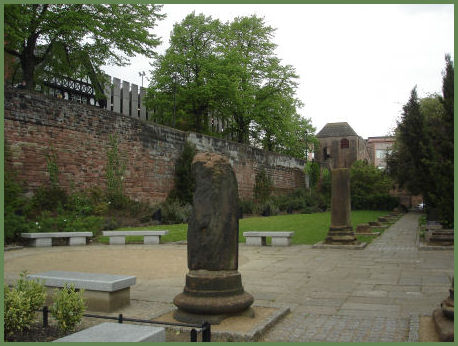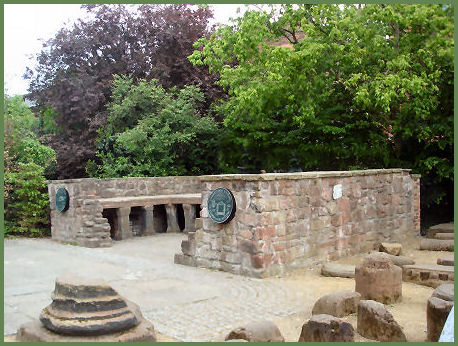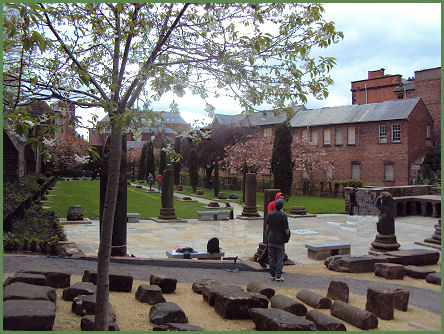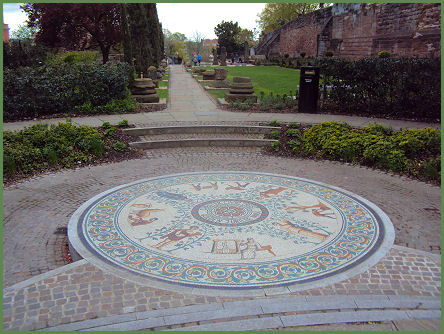The Roman Gardens
The Roman Gardens at Chester stand to the south east of the city, just outside the city walls near the Newgate and Chester Roman Amphitheatre. The gardens were constructed in the 1949 by Graham Webster, then curator of the Grosvenor Museum, and Charles Greenwood to display the building fragments from the Roman legionary fortress of Deva, including pieces from some of the most important military buildings, the main baths and the legionary headquarters and general artifacts found throughout the city. Most of the Roman building fragments now on display in the gardens were unearthed at the end of the nineteenth century during excavations in Chester. The project formed part of Chester's contribution to the 1951 Festival of Britain.

The imposing columns were taken from the exercise hall of the Roman bathhouse and originally stood six feet tall to support the stonework. The largest column currently in the Roman Gardens came from the assembly hall of the headquarters building (principia). A mosaic and a reconstructed hypocaust can also be seen in the gardens, the hypocaust was the ancient Roman heating system by which hot air was circulated under the floor of a building, (hypocaust derives from the Greek word meaning fire beneath) this was also recovered from the legionary baths in Bridge Street. The Roman bath building consisted of three large bathing halls which were supplied with hot and cold running water. They were the cold room (frigidarium), the hot room (caladarium), and the warm room (tepidarium), the first two of which had plunge baths. There was also a courtyard and an exercise hall, the columns from which are also now displayed in the gardens.
The reconstructed Hypocaust in the Roman Gardens

A repaired breach in the city walls is visible from the gardens, this was made by Parliamentary cannon bombardment from the churchyard and tower of St. John's Church on 22nd September 1645, during the Siege of Chester. Some thirty two shots were fired to create a breach in the walls, forming a gap large enough for ten men to enter at the same time. The gap was quickly blocked by the city's royalist defenders using bedding and wool-packs.

During the seventeenth century the area formed part Chester's clay tobacco pipe industry. Kilns were set up along the city walls to produce the clay pipes for export and local use. The foundations of a tobacco pipe factory have been found alongside the City Wall which runs to the east of the gardens.
The gardens were remodeled in 2000 to provide access to the River Dee. Informative panels, set amongst some attractive planting on the site provide information for visitors on Roman Chester and the garden. Chester Civic Trust commissioned Gary Drostle, a mosaic artist, to design and install three mosaics for the gardens. The circular mosaic at the entrance to the Roman Gardens was initiated by Chester Civic Trust to commemorate its Golden Jubilee in 2010. The hypocaust mosaic is a two dimensional mosaic, it is a reproduction of the Ostia style mosaic unearthed in Chester city centre which was laid within the Roman Bath House. The original mosaic was destroyed at the time of the contractors excavations in the 1960s. The Four Seasons design is based on a well-known mosaic from Chebba now in the Bardo Museum in Tunis.

The Roman Gardens can be accessed from Little St John Street near Newgate on the City Walls and from the Groves by the River Dee. Across the road from the Newgate entrance to the garden stand the remains of the Angle Tower that once formed part of the original Roman city wall.
